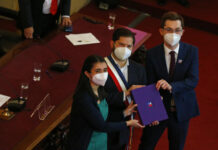Tether, a well-known stablecoin issuer, has decided to stop supporting its Euro-pegged stablecoin, EURt, due to regulatory challenges in Europe. The CEO of Tether, Paolo Ardoino, mentioned that the regulatory hurdles with MiCA have influenced the company’s decision to discontinue EURt.
The company has already stopped minting new EURt tokens, with the last issuance request processed in 2022. Current holders of EURt tokens have until November 27, 2025, to redeem them. Despite its efforts, EURt struggled to gain traction in the European market, with a market capitalization of only $38 million compared to competitors like Circle’s EURC and Stasis’ Euro.
Tether’s decision to end support for EURt is a response to the evolving regulatory landscape in Europe, particularly the EU’s Markets in Crypto-Assets Regulation (MiCA). This regulation requires stablecoin issuers to obtain e-money authorization in at least one EU member country, posing challenges for companies like Tether.
Paolo Ardoino emphasized the importance of finding a regulatory framework that balances risk management, innovation, and user protection. While Tether may not comply with MiCA, the company is shifting its focus to a new initiative called Hadron, which has the potential to revolutionize asset tokenization for various entities in Europe.
One example of Hadron’s success is its collaboration with Dutch fintech firm Quantoz to issue EURQ and USDQ stablecoins that fully comply with MiCA. This demonstrates Hadron’s adaptability to meet stringent regulatory requirements in the European market.
Overall, Tether’s decision to prioritize Hadron over EURt reflects the company’s commitment to navigating the complex regulatory environment in Europe while continuing to innovate in the digital asset space. The shift in focus to Hadron opens up new possibilities for asset tokenization and paves the way for future developments in the industry.














